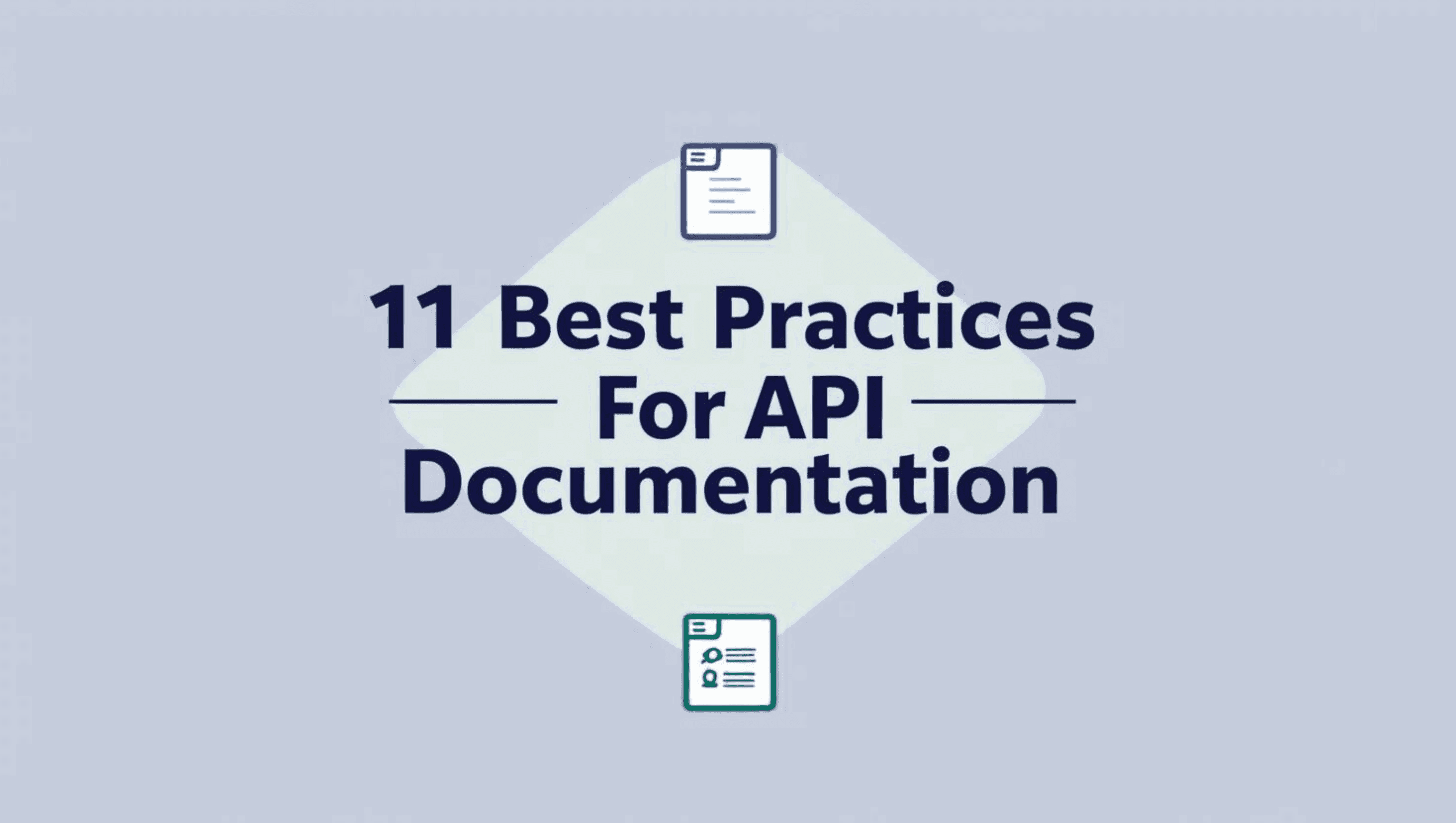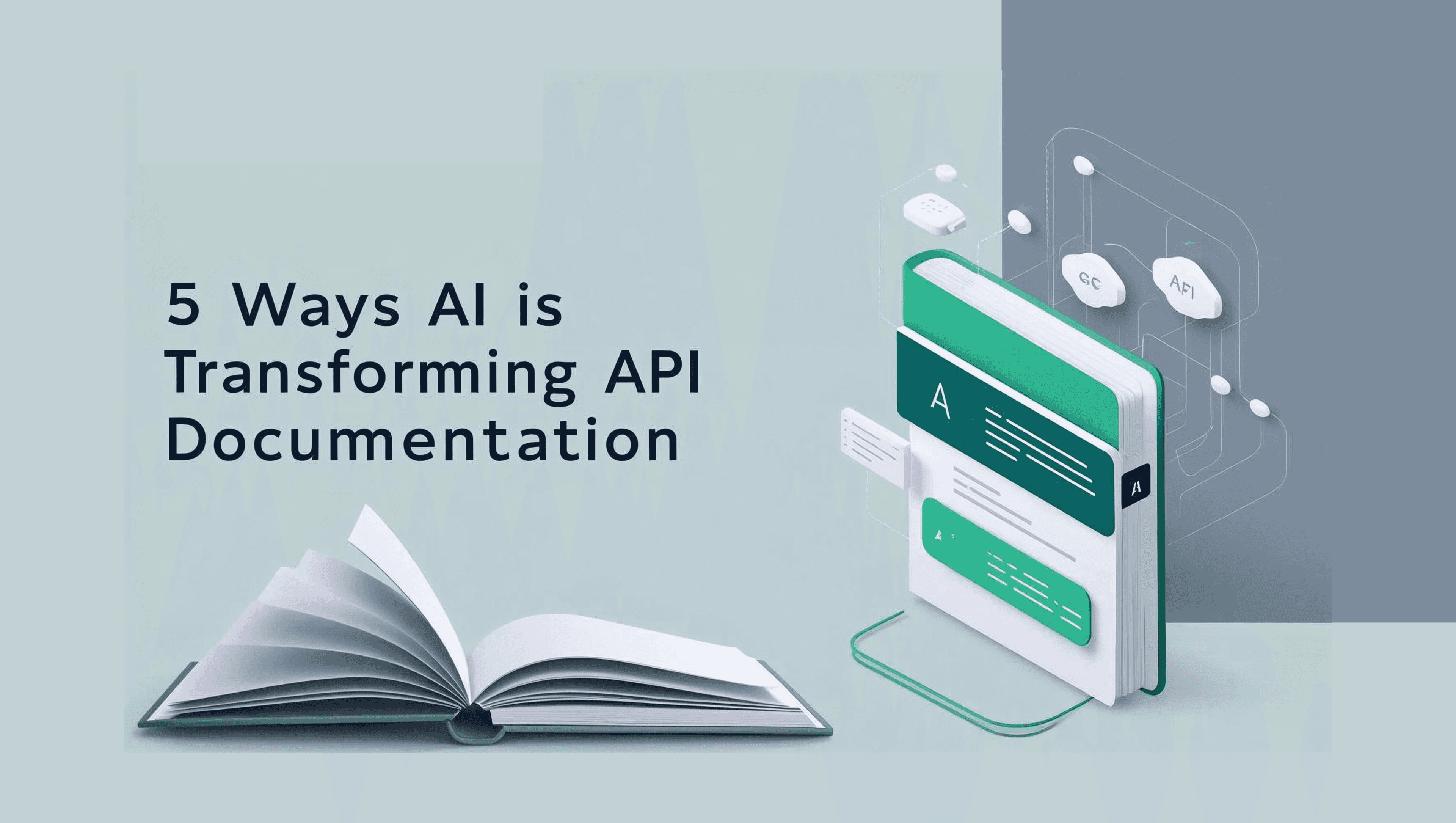How to Build a Quality API in 2025: Standards, Versioning, and Testing
Introduction
Hey there, fellow developers! Ever found yourself banging your head against the wall trying to figure out a poorly designed API? Yeah, we've all been there. It's like trying to assemble IKEA furniture with instructions written in hieroglyphics. Frustrating, right?
Well, here's the thing: as developers, we often find ourselves on both sides of the API fence. One day we're cursing at a clunky API, and the next, we're building one ourselves. So, let's talk about why well-designed APIs matter and the hurdles we face when creating them.
Quality Benchmarks & SLAs (what “good” looks like)
Quality APIs are measurable. Define latency SLOs (p95 < 300 ms), availability (≥99.9%), error budget (≤0.1%), and change-failure rate (<15%). Document rate limits per plan (e.g., 600 req/min) and publish a changelog tied to these benchmarks. When you declare the bar—and hold to it—consumers trust the interface and plan their own SLIs accordingly.
Why Well-Designed APIs are the Real MVPs
Picture this: you're integrating a new service into your app, and everything just... clicks. The API is intuitive, well-documented, and behaves exactly as you'd expect. It's like finding the perfect dance partner – everything flows smoothly. That's the magic of a well-designed API.
Good APIs aren't just a nice-to-have; they're essential. They can make or break the adoption of your service. Think about it – developers are more likely to use (and keep using) an API that doesn't make them want to pull their hair out. Plus, a quality API can lead to faster development times, fewer bugs, and happier developers. Win-win-win!
1. Shift Your Perspective
Alright, let's kick things off with a mind-bending exercise. Ready? I want you to forget everything you know about being an API designer. Just for a moment, pretend you've never created an API in your life. Instead, you're a developer trying to integrate a new service into your app. How would you want that API to work?
Think Like an API User, Not Just a Designer
Here's the secret sauce to creating a killer API: put yourself in the user's shoes. It's like being a chef who actually eats at their own restaurant. You'll quickly find out if your dishes (or in this case, your API) are any good!
When you're designing your API, constantly ask yourself:
"How can I make this easier to understand?"
"What would I expect this endpoint to do if I were using it?"
"Is this naming convention intuitive, or am I just being clever?"
Remember, your users are likely to be as critical of your API as you are of others. They'll enjoy pointing out every little flaw (come on, we've all done it). So beat them to the punch by identifying and fixing those flaws yourself!
Focus on Ease of Use and Integration
Now, let's talk about making your API a joy to use. Your goal should be to make integration so smooth that developers can get up and running in less time than it takes to brew a cup of coffee.
Here are some tips to keep in mind:
Keep it simple: Don't reinvent the wheel. Use standard conventions and formats that developers are already familiar with.
Be consistent: If you use camelCase for one parameter, stick with it throughout. Consistency makes your API predictable and easier to work with.
Provide clear examples: Show, don't just tell. Give code snippets that demonstrate how to use your API in real-world scenarios.
Think about common use cases: What will most users want to do with your API? Make those tasks as straightforward as possible.
Offer flexible input/output options: Supporting multiple formats (like JSON and XML) can make your API more accessible to a wider range of users.
Remember, your API is like a product, and developers are your customers. The easier you make it for them to "buy" (use) your product, the more likely they are to become loyal customers.
By shifting your perspective and focusing on ease of use, you're not just building an API – you're crafting an experience. An experience that developers will actually enjoy, rather than endure. And trust me, in the world of APIs, that's how you stand out from the crowd.
So, next time you're designing an API endpoint or writing documentation, take a step back and ask yourself: "Would I enjoy using this API?" If the answer is yes, you're on the right track!
2. Follow the 5 Golden Rules
Alright, API architects-in-training, it's time to unveil the secret sauce – the 5 Golden Rules of API design. Think of these as your API commandments. Follow them, and you'll be well on your way to creating an API that developers will rave about. Let's dive in!
2.1 Prioritize Documentation
First things first – documentation. I know, I know, it's not the most exciting part, but trust me, it's crucial. Good documentation is like a well-drawn treasure map – it guides users to the gold (your API's features) without leaving them lost at sea.
Be clear and comprehensive: Your docs should cover everything from authentication to each endpoint's behavior. No stone left unturned!
Show, don't just tell: Include plenty of usage examples and tutorials. Seeing the API in action helps users understand how to implement it themselves.
Keep it simple: Use plain language and avoid jargon. Your documentation should be understandable even to those new to your API.
Pro tip: Tools like Swagger or Postman can help you generate and maintain API documentation. They're lifesavers!
2.2 Maintain Stability and Consistency
Imagine if the rules of chess changed every week. Frustrating, right? That's how developers feel when APIs are unstable. Here's how to keep things steady:
Version from the start: Include version numbers in your URL (e.g., /api/v1/). This allows you to make changes without breaking existing integrations.
Stay consistent: Use the same naming conventions and data handling throughout your API. Consistency makes your API predictable and easier to use.
Keep users in the loop: Publish changelogs between versions. Let users know what's changed, what's new, and what (if anything) they need to update.
Remember, a stable API is a trustworthy API.
2.3 Design for Flexibility
One size doesn't fit all in the world of APIs. Design yours to be as flexible as a yoga instructor:
Support multiple formats: Offer input and output in various formats like JSON, XML, or YAML. Let users choose what works best for them.
Be parameter-friendly: Allow parameters to be specified in different ways – in the URL, as query strings, or in the request body.
Find the sweet spot: Balance strict validation with user convenience. Be forgiving where you can, but maintain data integrity where it matters.
Flexibility can make your API a go-to choice for developers working across different platforms and languages.
2.4 Implement Robust Security
Security isn't just a feature – it's a necessity. Here's how to keep your API fort secure:
Keep authentication simple but strong: Use established methods like API keys or OAuth. Make it easy to implement but hard to crack.
Check those permissions: Implement proper authorization checks. Make sure users can only access what they're supposed to.
Trust no one: Validate all input and whitelist functionality. Assume all incoming data is potentially malicious and act accordingly.
Remember, a secure API is a reliable API, and reliability builds trust with your users.
2.5 Facilitate Easy Adoption
Last but not least, make it easy for developers to jump on board:
Aim for quick wins: Design your API so developers can get a basic implementation up and running in 15 minutes or less.
Speak their language: Provide libraries for popular programming languages. This can significantly reduce integration time.
Be there for your users: Offer excellent support and address reported issues promptly. A responsive support team can turn frustrations into positive experiences.
The easier you make it for developers to adopt your API, the more likely they are to stick with it.
And there you have it – the 5 Golden Rules of API design. Follow these, and you'll be well on your way to creating an API that developers will love to use. Remember, a great API isn't just about functionality – it's about creating a smooth, enjoyable experience for your users. Now go forth and create amazing APIs!
API-First, Design-By-Contract (OpenAPI)
Design first, then build. Publish an OpenAPI contract that names resources, verbs, and schemas; review with stakeholders before any code lands. Generate mock servers from the spec to validate usability and run contract tests in CI to keep implementation aligned with the design. This avoids rework and keeps teams unblocked.
Backward Compatibility & Versioning Policy
Adopt a strict “don’t break user space” rule. Only add fields; never repurpose or remove without a deprecation window (≥ 6–12 months). Support dual versions during transitions and document migration steps with examples. Communicate changes via headers (e.g., Deprecation, Sunset) and RSS/Email updates.
Error Handling & Idempotency (Consistency Rules)
Standardize error shapes (code, message, details, traceId). Use HTTP semantics correctly; provide problem+json where helpful. For unsafe methods (POST), support idempotency keys to prevent duplicates on retries. Document retry and backoff expectations for clients.
Pagination, Filtering, and Sorting (Uniform Patterns)
Pick one pagination style (cursor-based recommended). Expose consistent query params: cursor, limit, filter[field], sort. Return next/prev cursors and a total-approximate field for large sets. Provide examples for common filters to reduce trial-and-error.
Observability & Release Gates
Emit structured logs with traceId and user/org context; expose request-ids back to clients. Track golden signals (latency, traffic, errors, saturation) and set release gates that block deploys if p95 latency or error budget thresholds are violated. Publish public status and incident retrospectives.
Style Guide & Design Review (Governance)
Adopt an API style guide (resource naming, verbs, pagination, errors, security) and run a design review before implementation. Automate checks with linters against the OpenAPI contract to prevent drift. Store approved patterns in a reusable design system for APIs.
Security-By-Default Checklist
Use OAuth 2.0 / OIDC or scoped API keys; ship least-privilege scopes.
Enforce TLS 1.2+, HSTS, and standard security headers.
Support JWT with short TTLs and rotation.
Provide webhook signatures and replay protection.
Sample API Quality Scorecard
Dimension | Standard | Current | Owner | Next Action |
|---|---|---|---|---|
SLA & SLOs | p95 < 300 ms, 99.9% uptime | 310 ms / 99.7% | Infra Lead | Optimize caching layer and add synthetic monitors |
Versioning | Dual-run + ≥6 mo deprecation | v1 + v2 overlap for 3 mo | API Architect | Extend deprecation window and publish migration doc |
Errors | Problem+JSON + traceId | Partial adoption | Backend Eng #2 | Update all endpoints to emit standardized error schema |
Pagination | Cursor + | Offset-based pagination | API Dev Lead | Migrate to cursor pattern with |
Security | OAuth/OIDC + scopes + HSTS | Static API keys | Security Engineer | Integrate OAuth 2.0 and short-lived JWT rotation |
Testing | Contract + DAST/IAST in CI | Unit tests only | QA Lead | Implement contract tests via Qodex + CI pipeline |
Observability | Golden signals + release gates | Latency tracked only | SRE | Add error/saturation metrics and automated release gates |
Mini-Playbook — From Spec to Stable API (7 steps)
Draft OpenAPI and run a design review.
Spin up mocks and validate with early consumers.
Add contract tests and negative tests.
Implement with observability hooks (traceId).
Release behind version or feature flag.
Monitor SLOs; enforce release gates.
Publish changelog and schedule deprecation windows.
Conclusion
Building a quality API isn't rocket science, but it does require thought, effort, and a user-centric approach. By shifting your perspective, following the 5 Golden Rules, and always keeping your users in mind, you can create an API that developers will actually enjoy using. Remember, a great API is more than just functional—it's intuitive, consistent, and empowering. It's the difference between developers grudgingly integrating your service and enthusiastically recommending it to others. So go ahead, apply these principles, and watch your API become the talk of the dev town!
Frequently Asked Questions
What exactly do we mean by a “quality API” and why is it important?
A quality API means more than just functional endpoints—it’s an API that is intuitive, consistent, secure and easy to integrate. When developers encounter an API with clear documentation, predictable response formats, versioning, and strong security, the adoption curve shortens and the integration experience improves. In contrast, a poorly designed API can lead to integration nightmares, unexpected bugs and frustrated users. By prioritising developer experience, consistent naming conventions and robust design, you build an API ecosystem that not only delivers functionality but drives engagement and loyalty.
What are the foundational design principles I should follow when starting to build an API?
When you begin crafting your API, it’s crucial to shift your mindset from “how can I build this” to “how will someone use this”. Focus on usability, clear endpoint definitions, consistent error handling and documentation that speaks developer language. Support formats like JSON (and where necessary XML or YAML), version your API from the outset (e.g., /v1/), and establish consistency in naming conventions and parameter usage. These design principles are the building blocks for a scalable, maintainable API that performs well and offers a positive developer experience.
How does documentation impact API adoption and usability?
Documentation is the secret gateway between your API and its audience. Good documentation explains authentication methods, endpoint behaviour, expected inputs/outputs, error codes and practical usage scenarios. It decreases friction for developers trying to integrate your API, directly affecting your adoption rate and ecosystem growth. Without clear docs, even a technically excellent API may languish because developers struggle to understand or trust it. Think of documentation as the user manual for your API—investing time here boosts trust, reduces support overhead and improves the overall integration experience.
What role does stability and versioning play in maintaining a high-quality API over time?
Stability and versioning are vital for long-term API success. Developers integrating your API expect consistency—if you change endpoints or response structures without warning, you risk breaking existing integrations. By using semantic versioning (for example /api/v2/), publishing changelogs and maintaining backward compatibility, you ensure trust and reliability. That reliability translates into repeat usage and helps your API become a core system rather than a temporary one. In practise, a stable and well-versioned API feels like a dependable product rather than a moving target.
How can I design for flexibility and developer-friendly integration in my API?
Designing for flexibility means giving developers options while maintaining structure. That could mean supporting multiple input/output formats (JSON, XML), accepting parameters both in query strings and request bodies, or providing SDKs/libraries for popular languages. Remember that good APIs don’t just answer the question “Can this do X?” but “How easily can I integrate this into my stack?” By reducing onboarding friction—providing clear examples, offering SDKs and aligning with common conventions—you increase your API’s usability and adoption velocity.
What advanced security and adoption practices should I implement to ensure my API meets enterprise standards?
When you move beyond basic API design into enterprise-grade quality, you must consider robust authentication (like OAuth 2.0), strict authorization, input validation and monitoring for malicious or unexpected traffic. Ensure you follow the principle of “never trust input”, whitelist permitted fields, validate types and formats and adopt industry best practices for securing API gateways. On the adoption side, offering developer support, SDKs, sandbox environments, quick start guides and responsive issue resolution all contribute to a superior integration experience. By marrying advanced security with developer ease, you build an API that’s not only safe but delightfully usable.
Discover, Test, & Secure your APIs 10x Faster than before
Auto-discover every endpoint, generate functional & security tests (OWASP Top 10), auto-heal as code changes, and run in CI/CD - no code needed.
Related Blogs


